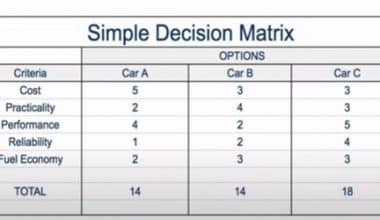For an organization to ensure they have effective coordination and communication. Each level of management strictly has its own set of responsibilities and functions aimed at achieving organizational goals and these levels are meant to be adhered to by every member of the organization. As explained in this article, how the levels of management work together to ensure the smooth functioning of the organization, effective utilization of resources, and the achievement of organizational objectives.
Levels of Management
Levels of management refer to the hierarchical structure within an organization, consisting of different tiers or levels of managerial positions. Each level of management has its own set of functions and responsibilities, all working together to ensure the smooth operation of the organization, effective utilization of resources, and the achievement of organizational objectives.
The three main levels of management
#1. Top-level Management
This level comprises executives, and directors, who are responsible for setting the overall direction and goals of the organization. They engage in strategic planning, policy-making, and decision-making that affects the entire organization. Top-level managers focus on long-term planning, establishing relationships with stakeholders, and allocating resources. They have the highest level of authority and are accountable for the success and performance of the organization. Examples of top-level management positions include CEOs, presidents, chief officers (CFO, CMO, etc.), board of directors, and vice presidents.
#2. Middle Management
Middle managers, including department heads, regional managers, and divisional managers, bridge the gap between top-level management and frontline employees. They are responsible for implementing the strategies formulated by top-level management and translating them into actionable plans. Middle managers coordinate activities among different departments, monitor progress, and allocate resources within their areas of responsibility. They facilitate communication between top-level management and employees. They oversee specific departments or divisions within the organization and are responsible for resource allocation, goal setting, and coordinating activities. Examples of middle-level management positions include department managers, regional managers, branch managers, and project managers.
#3. Frontline or Supervisory Management
This level includes supervisors, team leaders, and first-line managers who directly oversee and supervise employees’ daily work. They are responsible for implementing the plans and policies formulated by top-level and middle management. Front line Manager addresses any issues or conflicts that may arise. They provide guidance, assign tasks, monitor performance, and handle any immediate issues or conflicts that may arise. Examples of this include shift supervisors, team leaders, floor managers, and forepersons.
Business Levels of Management
Business-level management refers to the hierarchical structure of management within a business organization. It encompasses the various levels of managers who are responsible for different aspects of planning, decision-making, and overseeing operations within the organization.
The levels of management work in collaboration to ensure effective decision-making, goal attainment, resource allocation, and smooth operation of the business. This hierarchical structure enables effective coordination, communication, and achievement of organizational objectives.
Tiers in the Levels of Business Management
#1. Strategic Management
This level consists of top-level executives, such as CEOs, presidents, and board members. Strategic management focuses on long-term planning and decision-making that shape the overall direction and vision of the organization. They set goals, formulate strategies, allocate resources, and establish policies that guide the entire organization.
#2. Tactical Management
Middle-level managers operate at the tactical management level. They include department heads, divisional managers, and regional managers. Tactical management focuses on implementing the strategies defined by the strategic management level. These managers are responsible for developing departmental plans, coordinating resources, and ensuring that the organization’s objectives are met within their respective areas. They also facilitate communication between top-level management and frontline supervisors.
#3. Operational Management
Frontline supervisors and team leaders make up the operational management level. They are directly involved in overseeing the day-to-day operations of the organization. Operational managers ensure that tasks are executed efficiently, quality standards are met, and resources are effectively utilized. They assign work to employees, provide guidance, monitor performance, and resolve operational issues.
Levels of Management Titles
The levels of management in an organization come with various titles, which may vary depending on the specific organization and industry.
Here are some titles associated with each level:
#1. Top-level management
These executives hold the highest positions in the organization and are responsible for setting the overall direction and goals.
- CEO (Chief Executive Officer)
- President
- Managing Director
- Chairman
- Chief Operating Officer (COO)
- Chief Financial Officer (CFO)
- Chief Technology Officer (CTO)
- Chief Marketing Officer (CMO)
#2. Middle management
Middle managers are responsible for implementing strategies, coordinating activities within specific departments or regions, and translating organizational goals into actionable plans.
- Vice President
- General Manager
- Director
- Regional Manager
- Division Manager
- Department Head
- Team Leader
#3. Frontline or supervisory management
Frontline managers directly oversee employees, assign tasks, monitor performance, and ensure the efficient execution of daily operations.
- Supervisor
- Team Leader
- Shift Manager
- Floor Manager
- Crew Chief
- Foreperson
- Group Leader
Functions of Top-Level Management
Some responsibilities of first-level managers include:
- Providing direction and guidance to their team to ensure that they are meeting work goals and objectives.
- Monitoring employee performance and providing feedback to help employees improve their skills and perform their jobs more effectively.
- Assigning tasks to employees, setting deadlines, and ensuring that work is completed on time and to the required quality standards.
- Managing employee schedules and workloads to ensure that there is adequate coverage and that tasks are distributed fairly.
- Resolving conflicts and addressing employee complaints or issues.
- Ensuring that their team members are trained on job-specific skills and company policies and procedures.
- Collaborating with other managers and stakeholders within the organization to ensure that their team’s work aligns with organizational goals and priorities.
Functions of Middle-Level Management
- Implement organizational plans developed by top management.
- Develop tactics and plans at the departmental level based on organizational plans.
- Interpret and inform organizational policies to lower management.
- Make decisions about resources at the departmental level, e.g., the number of personnel.
- Provide guidance to lower-level managers to execute plans and improve
- They report and are accountable to top management for their department.
- They serve as a link between top-level managers and lower-level managers.
Functions of Low Level Management
- They provide guidance and equip employees with the tools to work effectively. And they provide assistance if some technical issues arise.
- Lower-level managers check whether employees produce output according to company standards or specifications.
- They help address and resolve employee complaints.
- They provide advice and feedback on functional and technical aspects.
- They identify job and resource gaps. For example, they recruit and train employees as members of their team.
- They also identify the tools employees need to work effectively. In addition, they develop work plans for daily, weekly, and monthly routines but no long-term plans.
- They prepare regular reports on employees’ performance and provide the required feedback.
Differences Between Top-Level Management and Lower-Level Management
#1. Authority and Decision-Making
Top-level management has the highest level of authority and is responsible for making strategic decisions, while lower-level management has a more limited scope of decision-making and focuses on implementing strategies and making operational decisions.
#2. Scope of Responsibilities
Top-level management oversees the entire organization, sets the vision and goals, and allocates resources, while lower-level management has more focused responsibilities within specific departments or teams.
#3. Communication and Coordination
Top-level management facilitates communication and coordination between different levels of management and stakeholders, while lower-level management plays a role in facilitating communication between top-level management and frontline employees.
#4. The Time Frame of Decision-Making
Top-level management makes strategic decisions with long-term implications, while lower-level management makes more immediate and short-term decisions that impact daily operations.
What are the Levels of Management?
The levels of management generally include top-level management, middle-level management, and lower-level or operational management. Top-level management is responsible for making strategic decisions and setting the overall direction of the organization. Middle-level management is responsible for implementing the strategies formulated by the top-level management and overseeing day-to-day operations. The lower-level management is responsible for supervising and executing the operational tasks required for the smooth functioning of the organization.
What are the Management Levels of Management?
The management levels within an organization refer to the different tiers or hierarchical positions of managers. These levels of management include
- The top-level management is responsible for making strategic decisions and setting the overall direction of the organization.
- Middle-level management is responsible for implementing the strategies formulated by the top-level management and overseeing day-to-day operations.
- The lower-level or operational management is responsible for supervising and executing the operational tasks required for the smooth functioning of the organization.
What is the Difference Between Top-Level Management and Lower-Level Management?
- Top-level management refers to executives and senior leaders who hold the highest positions in the organization. They are responsible for setting the overall direction, making strategic decisions, and formulating policies that shape the organization’s future. Top-level managers focus on long-term planning, resource allocation, and establishing relationships with stakeholders.
- Lower-level management includes middle managers and frontline supervisors who oversee specific departments, divisions, or teams within the organization. They implement the strategies developed by top-level management and ensure the efficient execution of plans on a day-to-day basis. Lower-level managers focus on tactical and operational decisions, translating strategic goals into actionable plans, supervising employees, and addressing immediate operational issues.
Who Introduced A Level of Management?
The concept of management hierarchy and levels can be traced back to the early works of management theorists such as Henri Fayol, who proposed the principles of management in the early 20th century. Fayol emphasized the importance of a clear hierarchy of authority and defined managerial functions at different levels of the organization.
Other management theorists and practitioners, including Max Weber and Peter Drucker, have also discussed and described the concept of management levels and their respective roles and responsibilities within organizations. The concept of levels of management in organizations is not attributed to a specific individual or single introduction.
What is Another Name for First Level Management?
Another name for first-level management is supervisory management, first-line management, or shop-level management. This level of management includes supervisors, team leaders, or first-line managers who directly oversee and supervise the work of employees. Supervisory management focuses on coordinating and directing the work of frontline employees. They address immediate operational issues and ensure smooth workflow within their respective areas of responsibility.
What is the Lowest Level of Management?
The lowest level of management is often referred to as frontline management or first-line management. It includes supervisors, team leaders, or managers who directly oversee and supervise the work of individual employees or a small group of employees.
Frontline managers are responsible for implementing the plans and policies formulated by higher levels of management. They assign tasks, provide guidance, monitor performance, and address immediate operational issues. Frontline managers play a critical role in ensuring that work is carried out efficiently, productivity is maximized, and employees are effectively managed.
What is the Role of Top Level Management?
The roles of first-level management, also known as first-line management or shop-level management. It involves overseeing and managing the day-to-day activities of employees working in a specific area or department of an organization.
Conclusion
Each level of management has its distinct functions. Top-level management focuses on strategic planning, policy-making, and establishing long-term goals. They also allocate resources, manage organizational structure, and make major decisions that impact the entire organization. Middle management primarily engages in tactical planning and implementing the strategies formulated by top-level management. They also coordinate between different departments, facilitate communication, and manage resources within their assigned areas.
Frontline or supervisory management concentrates on operational planning and overseeing day-to-day activities. They directly supervise employees, assign tasks, provide guidance, and monitor performance. They are responsible for ensuring that the work is carried out efficiently, quality standards are met, and any issues or conflicts are addressed promptly.
Related Articles
- WHAT IS MANAGEMENT BY OBJECTIVES (MBO)? Examples, and Detailed Guide
- WHAT IS CONTROL IN MANAGEMENT? All You Need To Know
- CONTRACT LIFECYCLE MANAGEMENT: The Ultimate Guide to CLM
- Working Capital Management: What Is It & How Does It Work?
- WHAT IS A CONTENT MANAGEMENT SYSTEM (CMS)






